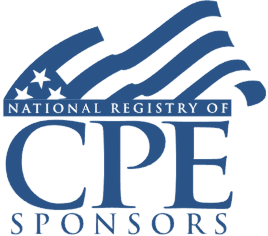Welcome! Save 30% on all CLE, CPE, and Professional Skills webinars, plus 15% off any annual pass with code HOLIDAY25
About the Course
Introduction
This webinar will guide tax and accounting professionals through the accounting and tax complexities of business combinations. Our panel of knowledgeable M&A experts will review ASC 805 and ASC 740 requirements as they relate to mergers and acquisitions and offer suggestions to simplify the relative financial and tax reporting responsibilities.
Description
Business combinations create complex tax and accounting reporting issues. Updated in 2021, ASC 805, Business Combinations, provides guidelines for recording these transactions. A combination could be taxable or nontaxable. Asset acquisitions, for example, can generate taxable income and goodwill. Even though a stock acquisition may be nontaxable, the acquirer must record the assets received at their fair value. The tax basis of these assets, however, is carried over, creating discrepancies between GAAP and tax values.
Perhaps the most formidable aspect of these combinations is the determination of deferred taxes and relative valuation allowances under ASC 740. Most notably, differences in book/tax values create recognition timing differences for book/tax purposes. Acquired carryforwards and uncertain tax positions further complicate these calculations. Tax professionals working with companies considering mergers or acquisitions must understand the intricacies of the tax reporting responsibilities associated with these transactions.
Listen as our panel of corporate tax professionals points out the key financial and tax reporting issues encountered by businesses and their accountants when companies combine.
Presented By

Mr. DeLau is a co-founder of TaxOps and a boomerang to our business tax advisory mission at TaxOps. Following a promotion to partner at Ernst & Young, he co-founded TaxOps to bring all the best of the big firm knowledge to businesses without the bureaucracy. He gained significant experience in international and domestic accounting and tax transactions within a U.S. corporate environment working for international accounting firms, and as tax director of multiple public and private companies, each with extensive and complex operations throughout the United States and internationally. Mr. Dela worked as the U.S. tax director for a Fortune 100 company based in Lausanne, Switzerland, and continues to consult on tax and accounting issues with various clients. He has significant experience and background in accounting for income tax (ASC 740).

Ms. Haskell has more than 15 years of public and private accounting experience in corporate, income tax provision and compliance as well as indirect tax experience. She also works with business strategy tax impact analysis, transfer pricing and foreign reporting, M&A due diligence and entity restructuring, making sure the tax pieces fit business goals. Ms. Haskell's role extends to counseling clients under audit and aiding in their efforts to develop corporate tax departments. Prior to TaxOps, she worked in both the public and private sector in corporate income tax provision and compliance. Ms. Haskell spent time at Ernst & Young (EY) handling tax compliance and provisions for corporate, international, federal, and state and local projects. She also worked at Webroot Inc., which was acquired by Carbonite, Inc. in 2019, where she was called on to perform cross-functional compliance and planning integration across tax disciplines.
-
BARBRI is a NASBA CPE sponsor and this 110-minute webinar is accredited for 2.0 CPE credits.
-
BARBRI is an IRS-approved continuing education provider offering certified courses for Enrolled Agents (EA) and Tax Return Preparers (RTRP).
Date + Time
- event
Wednesday, December 17, 2025
- schedule
1:00 p.m. ET./10:00 a.m. PT
I. Business combinations: introduction
II. ASC 805, Business Combinations
III. Taxable vs. nontaxable business combinations
IV. Goodwill
V. ASC 740, Income Taxes
VI. Deferred taxes
VII. Valuation allowances
VIII. Best practices
The panel will cover these and other critical issues:
- Distinguishing between taxable (asset) and nontaxable (stock) acquisitions
- Measuring deferred tax assets and liabilities under ASC 805 and ASC 740
- Calculating deferred tax assets when tax-deductible goodwill exceeds book goodwill
- Determining and reporting valuation allowances
Learning Objectives
After completing this course, you will be able to:
- Identify goodwill created by business combinations
- Determine deferred tax assets and liabilities under ASC 805 and ASC 740
- Decide how M&A impacts tax attributes
- Ascertain key differences in taxable and nontaxable business combinations
- Field of Study: Taxes
- Level of Knowledge: Intermediate
- Advance Preparation: None
- Teaching Method: Seminar/Lecture
- Delivery Method: Group-Internet (via computer)
- Attendance Monitoring Method: Attendance is monitored electronically via a participant's PIN and through a series of attendance verification prompts displayed throughout the program
- Prerequisite:
Three years+ business or public firm experience preparing complex tax forms and schedules, supervising other preparers or accountants. Specific knowledge and understanding of corporate taxation, including taxation of businesses, accounting methods, net operating losses and loss limitations; familiarity with net operating loss carry-backs and carry-forwards.

BARBRI, Inc. is registered with the National Association of State Boards of Accountancy (NASBA) as a sponsor of continuing professional education on the National Registry of CPE Sponsors. State boards of Accountancy have final authority on the acceptance of individual courses for CPE Credits. Complaints regarding registered sponsons may be submitted to NASBA through its website: www.nasbaregistry.org.

BARBRI is an IRS-approved continuing education provider offering certified courses for Enrolled Agents (EA) and Tax Return Preparers (RTRP).

BARBRI CE webinars-powered by Barbri-are backed by our 100% unconditional money-back guarantee: If you are not satisfied with any of our products, simply let us know and get a full refund. Contact us at 1-800-926-7926 .
Unlimited access to premium CLE courses:
- Annual access
- Available live and on-demand
- Best for attorneys and legal professionals
Unlimited access to premium CPE courses.:
- Annual access
- Available live and on-demand
- Best for CPAs and tax professionals
Unlimited access to premium CLE, CPE, Professional Skills and Practice-Ready courses.:
- Annual access
- Available live and on-demand
- Best for legal, accounting, and tax professionals
Unlimited access to Professional Skills and Practice-Ready courses:
- Annual access
- Available on-demand
- Best for new attorneys
Related Courses

State Tax Strategies for Athletes and Entertainers: Residency and SALT Deduction Limitations
Tuesday, January 6, 2026
1:00 p.m. ET./10:00 a.m. PT



